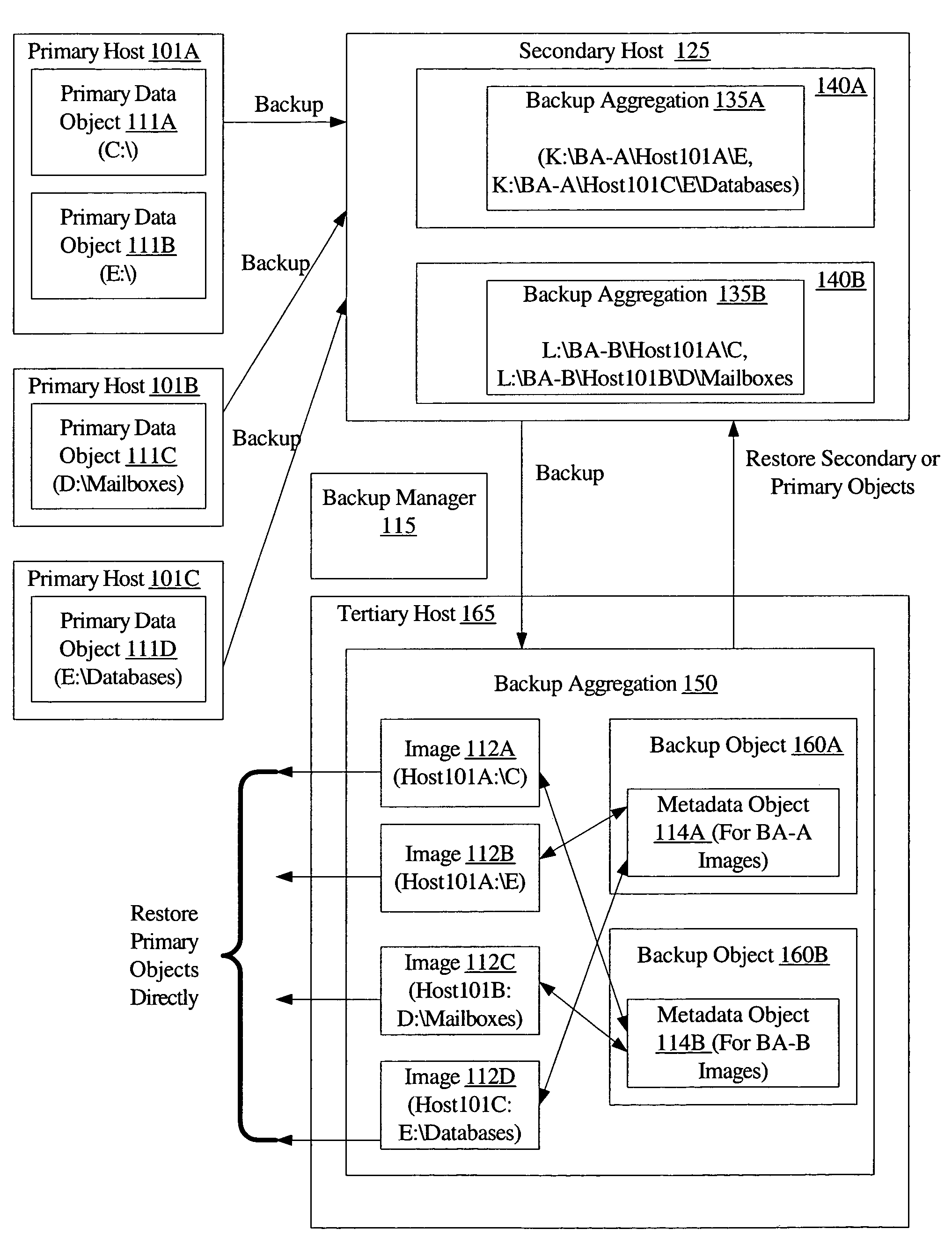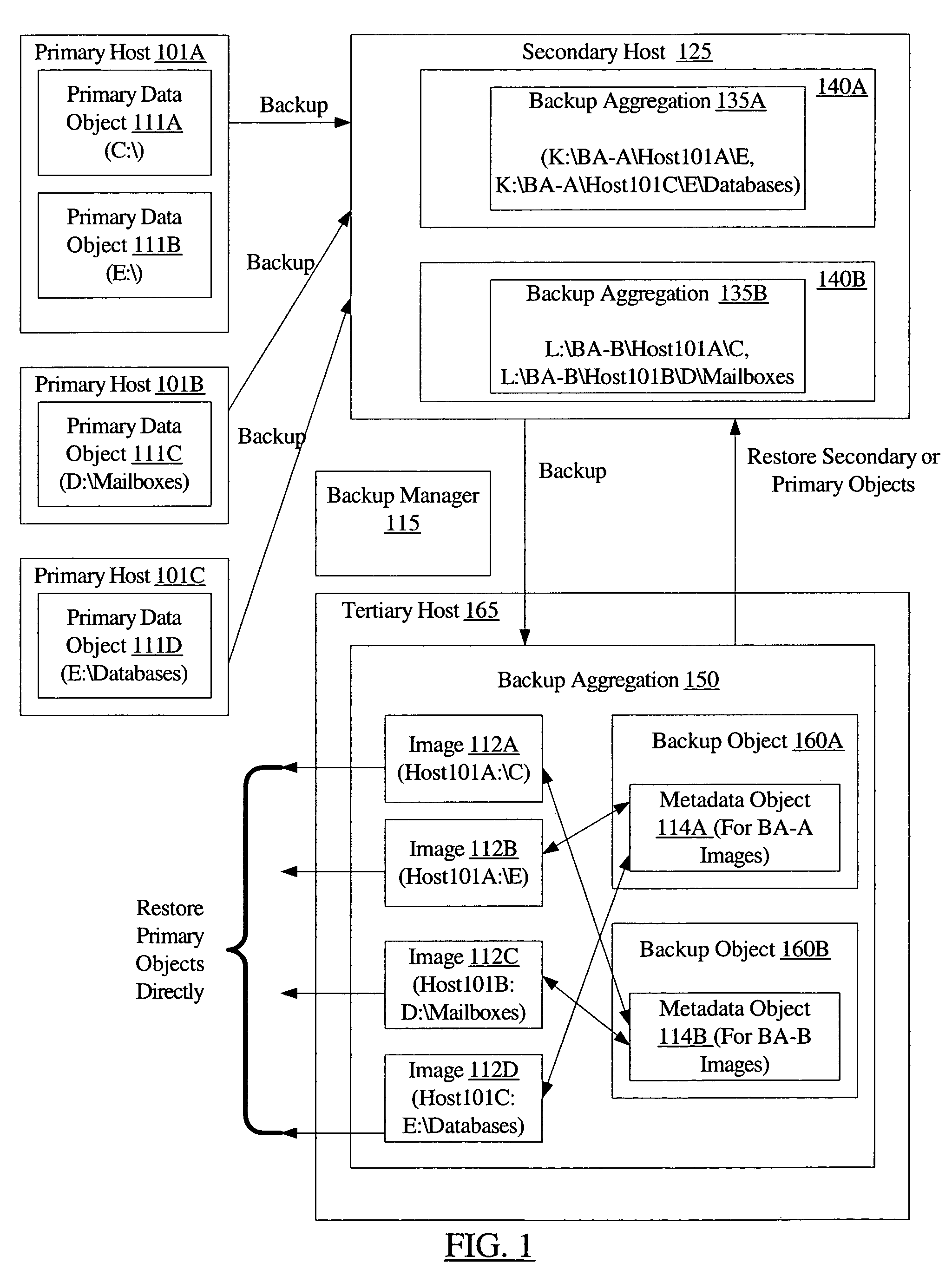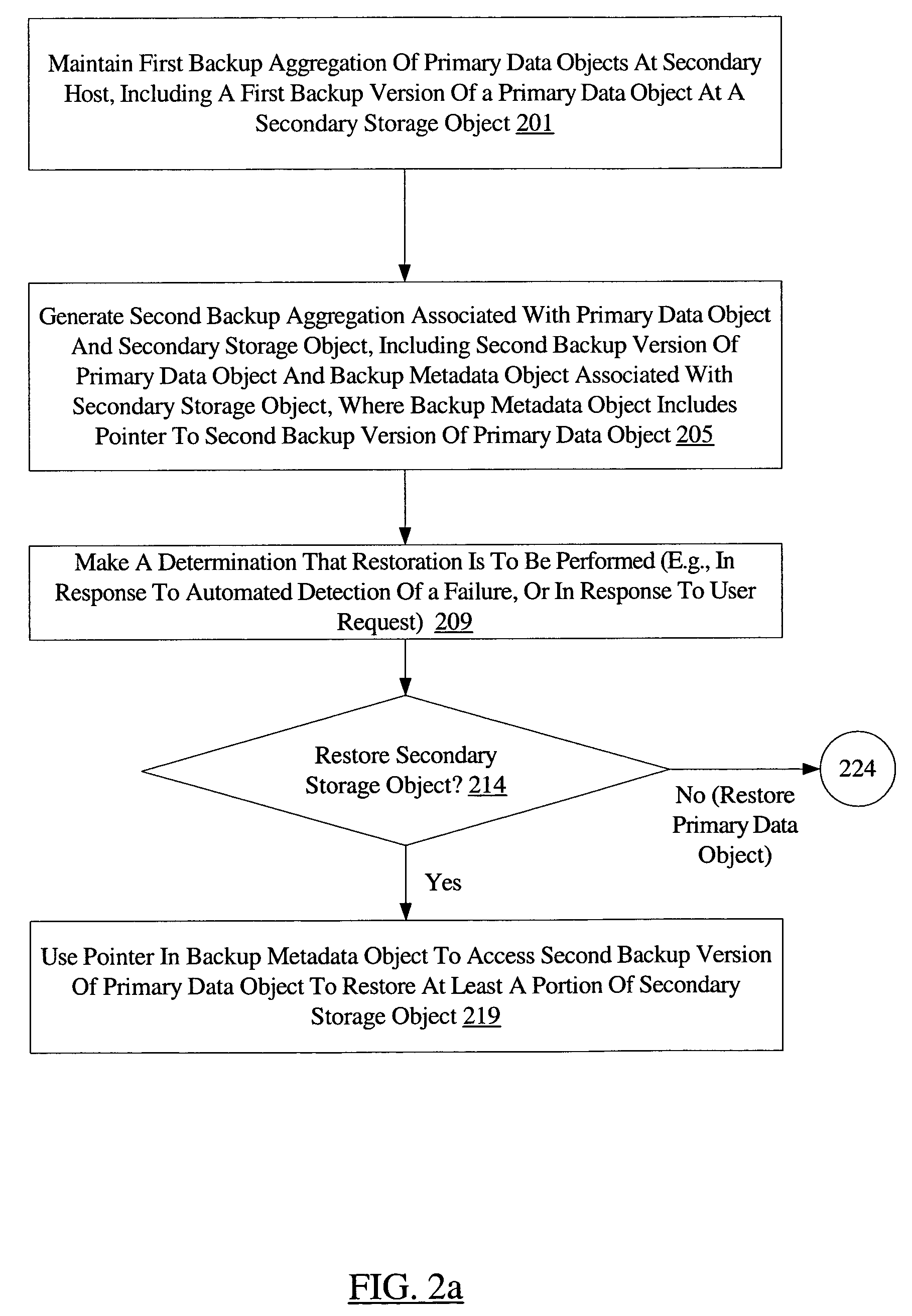Efficient backup and restore using metadata mapping
a metadata mapping and efficient technology, applied in the field of computer systems, can solve the problems of single backup version of production data that is not sufficient to meet the availability requirements of modern mission-critical applications, data corruption, loss of critical data in such environments, etc., and achieve the effect of data duplication within the second backup aggregation
- Summary
- Abstract
- Description
- Claims
- Application Information
AI Technical Summary
Benefits of technology
Problems solved by technology
Method used
Image
Examples
Embodiment Construction
[0019]FIG. 1 is a block diagram illustrating a system 100 according to one embodiment. As shown, system 100 includes a backup manager 115, a plurality of primary hosts 101 (e.g., primary hosts 101A, 101B, and 101C), a secondary host 125, and a tertiary host 165. As described below in further detail, various components of backup manager may be executed at primary hosts 101, secondary host 125, tertiary host 165, and / or at other hosts in different embodiments. Each primary host 101 may be configured to execute a set of one or more applications whose data objects may be backed up (e.g., using replication, snapshot generation, or any other desired backup technique or using a combination of backup techniques) by backup manager 115. For example, primary host 101A may include primary data objects 111A and 111B for a file server application, primary host 101B may include primary data object 111C for an electronic mail server application, and primary host 101C may include primary data object...
PUM
 Login to View More
Login to View More Abstract
Description
Claims
Application Information
 Login to View More
Login to View More - R&D
- Intellectual Property
- Life Sciences
- Materials
- Tech Scout
- Unparalleled Data Quality
- Higher Quality Content
- 60% Fewer Hallucinations
Browse by: Latest US Patents, China's latest patents, Technical Efficacy Thesaurus, Application Domain, Technology Topic, Popular Technical Reports.
© 2025 PatSnap. All rights reserved.Legal|Privacy policy|Modern Slavery Act Transparency Statement|Sitemap|About US| Contact US: help@patsnap.com



